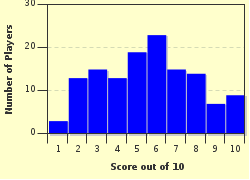Quiz Answer Key and Fun Facts
1. The abbreviation "Op." that follows the titles of many pieces of music is short for opus, the Latin word that means "work" (as in a work of art). What does the designation "woo" mean?
2. Given the piece title "Andante for Horn and Piano in C major, AV 86A," who would you guess was the composer?
3. How are J.S. Bach's musical works usually identified?
4. Whose works are catalogued with D numbers?
5. Fill in the blank: Carl _________'s piece titles may be followed by an FS number.
6. Name the scholar who catalogued the works of Joseph Haydn. (Hint: His last name is also the name of a city in New Jersey.)
7. Ludwig Kochel not only catalogued Mozart's works, but those of Domenico Scarlatti as well.
8. Whose music is typically identified by S numbers?
9. Given the piece title "Sinfonia Pastorale in D major, Wolf D4," who would you guess was the composer? (Be careful - the obvious choice may not be the correct answer!)
10. What is an often-seen catalogue abbreviation for works by C.P.E. Bach?
Source: Author
celicadriver
This quiz was reviewed by FunTrivia editor
Bruyere before going online.
Any errors found in FunTrivia content are routinely corrected through our feedback system.

